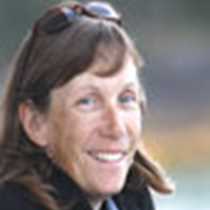After a night of rain that included a wonderful thunderstorm, we awoke to a nice day alongside the village of Amazonas. Today we had the opportunity to learn more about the people who live here, on the edge of this reserve, and along the banks of the Marañon River.
We spent the morning in the community of Amazonas. This village of 500 people, although not very many miles from the bigger town of Nauta in miles, is still quite removed when you have to go by canoe from place to place. This was Lindblad-National Geographic’s first visit to this community and we were welcomed by smiling faces and friendly people. As we strolled around the community, people were happy to talk with us about their lives or the tasks at hand. One woman demonstrated the process of peeling and grating cassava, while another man invited us in for a look at the tools he was using to process the rice (grown locally) to remove the hulls. At the middle school we exchanged greetings and songs with the students and were impressed by their new school buildling. We were also happy to meet the kids to whom our school supplies (brought from home) will help.
Our final stop was for a visit with women, men, and teenagers who work with or benefit from a local nonprofit called Minga Peru. We were impressed with the presentations done by these people and the programs themselves. We learned about everything from radio shows and agroforestry to reproductive health programs. Minga Peru works with over 35 communities in this part of the Amazon by training women as community promoters who then go share what they have learned with the others in their towns.
By lunchtime we could all say that we have seen the start of the Amazon River. Although the headwaters are more than 1600 miles upstream in the Andes, where the Marañon and the Ucayali join is where the name Amazon is first applied to the largest river in the world. From here it is still 2350 miles to the Atlantic Ocean!
This afternoon we went out for another excursion—some of us by kayak and some by skiff on the Yarapa River. The afternoon shade and cooling temperatures made for a relaxing ride. Along the way we saw three species of monkeys—pygmy marmoset, squirrel monkey, and our first Monk Saki. This medium-sized monkey with the thick fur and bushy tail looked more like he was dressed for the Arctic than the Amazon.
It is now time for dinner but our day is not over yet. After dinner we will leave the comfort of our ship and head for the forest. A night hike awaits. We wonder what we will see in the forest at night … and maybe what tricks our imaginations will try to play in the dark. At the very least we know that the nighttime forest orchestra is tuning up and we will be treated to a symphony like no other.







